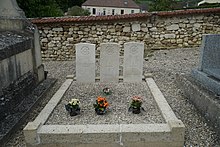|
Army Cyclist Corps    The Army Cyclist Corps was a corps of the British Army active during the First World War, and controlling the Army's bicycle infantry. HistoryFormationVolunteer cyclist units had been formed as early as the 1880s, with the first complete bicycle unit (the 26th Middlesex Rifle Volunteers) being raised in 1888.[1] Cyclists were employed on an intermittent basis during the South African War – whilst they were not deployed as organised combat formations, the bicycle was found to be invaluable for reconnaissance and communications work, being lighter, quieter, and logistically much easier to support than horses. When the Haldane reforms in 1908 reorganised the volunteers into the Territorial Force, nine battalions of cyclists were formed - one from the 26th Middlesex, five from volunteer infantry battalions, and three newly raised.
A tenth, the 7th (Cyclist) Battalion, Devonshire Regiment, was raised later in 1908;[8] in 1910, the Essex and Suffolk Cyclist Battalion split into the 6th (Cyclist) Battalion, Suffolk Regiment,[9] and the 8th (Cyclist) Battalion, Essex Regiment;[10] in 1911, the 9th (Cyclist) Battalion, Hampshire Regiment[11] and 6th (Cyclist) Battalion, Royal Sussex Regiment[12] were formed and, in early 1914, the Huntingdonshire Cyclist Battalion was formed.[13] On the eve of the First World War, the Territorial Force thus stood at a strength of fourteen cyclist battalions. Ten of these were Territorial battalions of regular infantry regiments, whilst four – the Northern, Highland, Kent, and Huntingdonshire Cyclists – were independent battalions without regimental affiliation. Wartime service In accordance with the Territorial and Reserve Forces Act 1907 (7 Edw. 7, c.9) which brought the Territorial Force into being, the TF was intended to be a home defence force for service during wartime and members could not be compelled to serve outside the country. However, on the outbreak of war on 4 August 1914, many members volunteered for Imperial Service. Therefore, TF units were split in August and September 1914 into 1st Line (liable for overseas service) and 2nd Line (home service for those unable or unwilling to serve overseas) units. Later, a 3rd Line was formed to act as a reserve, providing trained replacements for the 1st and 2nd Line regiments.[14] On the outbreak of the First World War, the cyclist battalions were employed on Coastal Defences in the United Kingdom. Their role was considered to be so important that, initially, none of them were sent overseas.[2] In 1915, the Army Cyclist Corps was founded to encompass these battalions; it later extended to cover a dozen more battalions raised from second-line yeomanry regiments which had been converted to cyclists. Most units of the Corps served out their time in the United Kingdom, providing replacement drafts to infantry battalions; some were converted back to conventional infantry and saw active service, such as the Kent Cyclists (on the North-West Frontier) or the 2/10th Royal Scots (in northern Russia).[2] Cyclists, as well as cavalry, of the British Salonika Army were used to patrol villages in the Struma Valley, in order to deny them to the Bulgarians and Turks.[15][16] Formed units of the Corps were not sent overseas; this was done in small groups of men, with the divisions possessing individual cyclist companies and composite battalions later formed at corps level. These were rarely committed to action, rather being held back in preparation for the resumption of "normal" mobile warfare. Cyclists were employed in combat, but in conditions of trench warfare they were generally found to be ineffective. In 1918, however, with the deadlock of the trenches overcome, cyclists once more proved invaluable for reconnaissance. Two battalions, 25th (County of London) Cyclist Battalion and the Kent Cyclist Battalion fought in the Third Anglo-Afghan War. DisbandedThe Corps was disbanded in 1920; by 1922 all remaining Territorial cyclist battalions had been converted back to conventional units.
See alsoNotes
References
Bibliography
External links
|